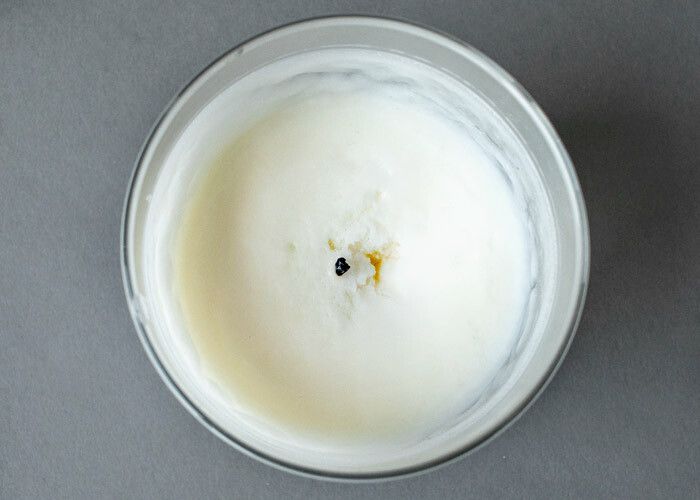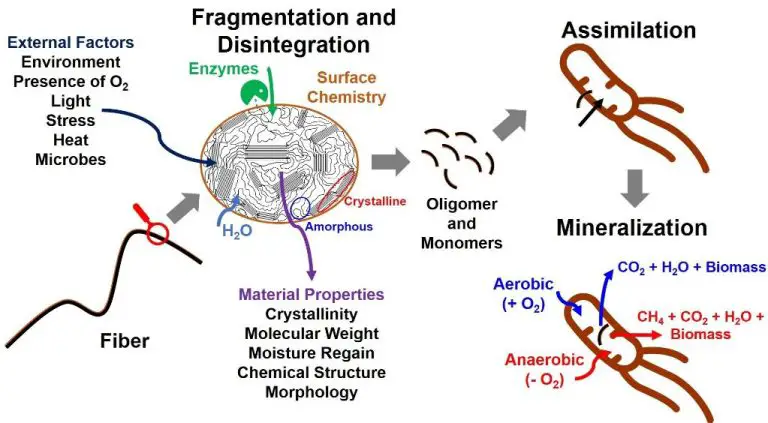Do Soy Blend Candles Produce Soot?
Soy blend candles are made from a combination of soy wax and paraffin wax. As explained by Candle Delirium, “Soy candles contain a blend of soy wax and paraffin wax, allowing manufacturers to modify the burn, scent throw, and texture” (https://www.candledelirium.com/blog/soy-candles-quick-facts/). Soy wax became popular in the 1990s as an alternative to paraffin wax candles. According to Blissful Instincts, “Soy wax candles offer a natural, eco-friendly alternative to paraffin wax candles” (https://blissfulinstincts.com/blogs/why-soy-blend-candles/why-soy-blend-candles). The blend allows manufacturers to modify the properties while still being more natural than pure paraffin.
However, some consumers have noticed that soy blend candles seem to produce more soot than expected. This has led many to question whether soy blend candles actually produce more soot than paraffin or other candle types. This article will examine the evidence around soot production in soy blend candles and discuss the factors that contribute to sooting.
How Soy Blend Candles Are Made
Soy blend candles are made from a mixture of soy wax and other natural waxes, most commonly paraffin wax. Soy wax itself is derived from soybean oil and is a renewable and environmentally friendly alternative to paraffin wax, which is a petroleum byproduct.[1] The exact ratio of soy wax to paraffin can vary between manufacturers, but a typical soy blend contains a majority of soy wax along with 5-50% paraffin wax.
To make soy blend candles, manufacturers start with soy wax flakes or pellets. The soy wax is melted down along with the paraffin wax in large boilers or melters. Once melted, additional ingredients like fragrance oils, essential oils, or dye blocks can be added and mixed in.[2] The liquid wax is then poured into candle vessels or molds while still hot and allowed to cool until solidified. Soy blend cools slightly faster than pure paraffin due to the soy component. The finished candle can then be assembled with a wick to complete the soy blend candle.
Compared to paraffin wax, soy blend candles are praised for their renewable origins, better scent throw, and natural feel. The soy component also makes the wax burn cooler and cleaner. However, the addition of paraffin allows soy blend to hold scent and color better while also making it cheaper to produce than pure soy wax.
[1] https://www.candlescience.com/learning/what-is-soy-wax/
[2] https://1502candleco.com/blogs/news/2018-7-7-how-soy-wax-is-made
Why Soy Blend Candles Became Popular
Soy blend candles gained popularity in the early 2000s as an alternative to paraffin wax candles. They were marketed as a more natural, cleaner burning option. Soybeans are a renewable and sustainable crop, so soy candle manufacturers promoted them as being better for the environment.
Compared to petroleum-based paraffin wax, soy wax is perceived as more natural since it comes from plants. Soy wax is made from hydrogenated soybean oil along with other vegetable oils and natural waxes. This plant-based origin led many consumers to view soy candles as a healthier choice over paraffin.
Soy candles are also cleaner burning than paraffin candles. The natural soy wax has a lower melting point so the wax pools evenly as the candle burns, which prevents tunneling. The wicks in soy candles tend to curl over as they burn, keeping the wick centered in the wax pool. This leads to more complete combustion and less soot. The soy wax itself produces very little smoke when burning compared to paraffin.
Testing Soy Blend Candles for Soot
Independent lab tests have compared the sooting tendencies of soy blend candles versus paraffin candles. According to research by Umi Say, soy candles produce less soot and toxic chemicals than candles made from paraffin. In lab tests conducted by South Carolina State University, paraffin wax candles produced heavy soot deposits, while vegetable-based soy candles did not produce measurable soot (Matty’s Candles, n.d.). The university experts analyzed the fumes released by burning candles and found paraffin wax emitted chemicals like toluene and benzene, known carcinogens. In comparison, soy candles did not release these toxic chemicals during burning.

Additional testing by YNNY Candles showed that soy wax is non-reactive and does not produce soot or toxins during controlled lab tests. The renewable, sustainable soy wax used in soy candles makes them an environmentally-friendly alternative to paraffin candles. Based on multiple lab test findings, soy blend candles produce little to no soot compared to their paraffin counterparts.
Factors that Influence Sooting
There are a few key factors that can influence the amount of soot produced when burning a soy blend candle:
Wick Type/Size – Using the proper wick for the diameter of the candle is crucial. A wick that is too wide for the melting pool can result in excess soot. As a general guideline, soy blend candles perform best with a thinner, cotton or paper cored wick. Be sure to test different wick types and widths when formulating a candle to find the optimal setup that produces minimal sooting. Refer to manufacturer guidelines on proper wicking but also test for yourself (source).
Burning Conditions – Environmental factors like drafts or high altitude can impact the burn and lead to more soot. Make sure to burn soy candles in ideal conditions – out of drafts, at sea level altitude, and in temperatures between 65-80°F. Sooting is also more likely to occur if the candle isn’t allowed to form a full melt pool. Always burn soy blend candles for at least 2-4 hours and allow the wax to completely liquefy across the surface before extinguishing (source).
Additives – Certain fragrance oils and dye colors are more prone to sooting than others, especially in higher concentrations. When formulating, test for sooting at the maximum recommended fragrance load. If needed, reducing the fragrance percentage can help minimize soot (source).
Tips to Reduce Sooting
One of the most effective ways to reduce sooting from soy blend candles is through proper wick maintenance. As recommended by Alumina Life (https://aluminatelife.com/what-is-candle-soot-how-to-get-rid-of-it/), wicks should be trimmed to 1/4″ before lighting the candle for the first time. After that, wicks need to be trimmed every time before lighting to prevent overly large flames that can cause sooting. US Candle Company (https://www.uscandleco.com/5-easy-ways-to-reduce-candle-soot.html) also suggests regular wick trimming as a simple way to minimize soot.
Allowing the melt pool to reach the edges of the container before extinguishing the candle is another tip. This helps prevent tunneling, where melted wax cools before reaching the sides. Tunneling causes the wick to become off-center, leading to uneven burning and more soot. Let the wax pool completely liquefy from edge to edge before blowing out the candle.
Keeping the wick centered as the candle burns is crucial as well. Wicks that touch the side of the container will smoke and soot. Periodically check that the wick stands upright and in the middle as the wax melts. Gently straighten or re-center the wick while the candle is still hot to keep it from sooting.
Soy Soot vs Paraffin Soot
When it comes to soot, there are some key differences between soy blend and paraffin candles. According to Pure Integrity https://www.pureintegrity.com/soy-vs-paraffin-candles.html, the chemical composition of paraffin soot contains carcinogenic hydrocarbons that can be harmful. Soy soot does not contain these compounds. The hydrocarbon chains in paraffin soot are also longer than those found in soy soot, making paraffin soot much harder to remove and clean up.
Soy wax is made from soybeans, a renewable and sustainable resource. Paraffin wax, on the other hand, is a petroleum byproduct. This gives soy wax an environmental advantage over paraffin. When burned, soy wax produces very little soot compared to paraffin candles. The small amount of soot produced by soy candles is made up of natural carbon molecules that are easier to clean than the oily, sticky soot from paraffin.
Overall, soy candle soot is chemically safer and simpler to clean up than paraffin candle soot. Soy wax provides a cleaner burning experience without the worrisome hydrocarbon compounds released by petroleum-based paraffin wax.
Impact of Soot on Indoor Air Quality
When candles are burned, they release particulates into the air such as soot and smoke. These can have negative impacts on indoor air quality. According to filtrete, candle soot contains fine particles that can get deep into the lungs. The soot also contains polycyclic aromatic hydrocarbons, which are carcinogens.
Compared to paraffin candles, soy candles tend to produce less soot because soy wax has a lower melting point and burns cooler. However, soy candles can still generate soot, especially if burned improperly with a flickering flame. According to BlueOx, an overly large wick can result in more soot from soy candles. Proper wick size for the wax pool is important to minimize soot.
In general, frequent and prolonged burning of any candles can lead to soot buildup in the home. Proper ventilation while burning candles is recommended. Soy candles produce less soot than paraffin, but still require care to minimize particulates.
Alternatives to Soy Blend
There are a few popular alternatives to soy wax for candle making:
Beeswax
Beeswax is an all-natural wax produced by honey bees. It has a pleasant honey scent and burns cleanly without producing much soot (source). Beeswax candles tend to be more expensive than soy candles but provide an eco-friendly, non-toxic option.
Coconut Wax
Coconut wax comes from the oils in coconut meat. It is another natural alternative to soy wax. Coconut wax melts at a lower temperature than soy wax and produces a brighter flame. Coconut wax candles release a light tropical scent when burned (source).
Palm Wax
Palm wax is derived from the fruit of palm trees. It is hard, opaque, and burns slowly with minimal sooting. Palm wax provides good scent throw in candles. However, there are environmental concerns around unsustainable palm oil production practices.
Conclusion
In conclusion, testing has shown that soy blend candles can produce some soot, especially if the wick is not trimmed properly or the candle is burned in still air. However, soy candle soot production is generally less than paraffin candles. To minimize sooting, trim wicks to 1⁄4 inch before each use and make sure there is air circulation around the candle as it burns. Soy candle soot production can also be reduced by using cotton or paper cored wicks, avoiding excessive drafts, and keeping the candle away from walls, furniture, and other objects.
While occasional sooting is normal, excessive black smoke or soot buildup indicates a problem with the wick or burning conditions. If sooting cannot be controlled through proper wick trimming and airflow, it may be best to explore alternative wax options like beeswax or a higher purity soy/paraffin blend.
Overall, with proper wick maintenance and burning habits, soy candles can be burned with minimal sooting. Their natural ingredients and lower soot production compared to paraffin make them a good option for those looking to minimize indoor air pollution from candles.





